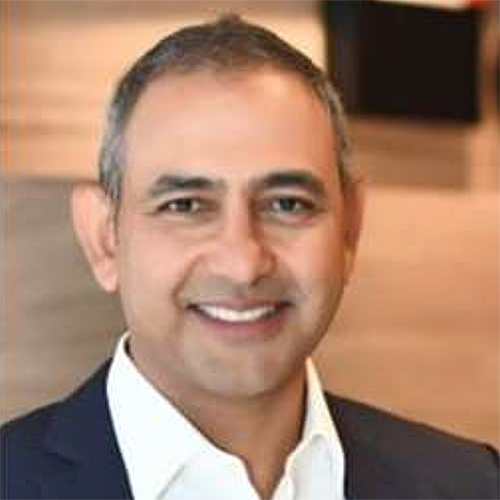At this year’s Sibos, glimpses of an alternative future for transaction banking were among the top trending topics. For those who are used to a steady-state existence, they looked frightening. But for others, rather than cower in fear, they are doing what banks still can do – join up with the many fintech (financial technology) start-ups by launching innovation labs to lure talent or, if that does not appeal, buy stakes in these start-ups.
“The paradigm has shifted to technology,” declares Satvinder Singh, global head of institutional cash and securities services at Deutsche Bank. Agrees John Laurens, head of global transaction services at DBS Bank: “The buzz is on fintech especially distributed ledgers (blockchains), etc – and what they mean especially for transaction banking.”
The question is whether it will be disruptive or transformative, adds Laurens; whether it will be a competition or an opportunity to complement. “It is very easy to take a view of technology as a disrupter,” notes Singh. “I have seen more cynicism and paranoia this year than ever before.” Yet, as Laurens suggests, there is no better time to be in transaction banking than now.
The paranoia or excitement has much to do with the stakes, which are high. Wholesale transaction banking revenues globally was in excess of US$300 billion in 2014, which according to Boston Consulting Group, could double by 2024. “Even if the estimate is wrong by a factor of 50% to 60%, we are still talking about a huge number – huge wallet; huge opportunity,” says Singh.
At the heart of the technology conversation is blockchain. In its most well-known form, it is the system that powers the whole Bitcoin universe. Essentially, it is another word for a database that gives users the ability to store and share data. According to blockchain consultant Antony Lewis, blockchain “relies on cryptography rather than logins for securing data”.
“Blockchain technology is a real innovation that will make a difference and will have many applications across payments, trade and securities. However, currently, there is more discussion at a conceptual level rather practical application,” says Alex Manson, global head, transaction banking at Standard Chartered Bank.
“Blockchain is very interesting and it will play a role in some form in the future,” shares Carole Berndt, managing director of global transaction banking at ANZ. “It could be like the internet and its impact on banking. We have incorporated internet into our processes especially in how we interact with clients. But we still do a lot of normal operations stuff. Blockchain will be part of the story. But I don’t think it will be the headline.”
“I do think that it could be transformative,” believes Laurens at DBS. “Today, there are still issues facing the industry for which the technology can be applied. At DBS, we are looking to embrace this whole space. There is a lot of experimentation going on such as in trade, which could later develop into a business case.”
Beyond regulation
Indeed, from the years following the global financial crisis when the conversations centred much on regulation and compliance – being inward looking if you like, Sibos 2015 is somewhat more about looking ahead. “The noise may have come down a notch or two, but not the work,” clarifies Manson. “I cannot think of too many banks that may be in denial about the importance of regulatory compliance. Most banks are focussed on complying and getting on with what they are expected to do. Ultimately, we all want to ensure the standard for compliance is raised to make the industry much safer.”
“The dark clouds of pessimism have lifted,” reckons Berndt of ANZ. “Thank goodness we have moved on from SEPA (Single Euro Payments Area). We are little bit more optimistic – we are now in that space where we are trying to do a few things – the digital disruption stuff – where is it headed? What the shape of our banking relationships will be in the new normal. We have seen a number of banks retract geographically and by products. Who are going to be our friends and in which places? We need to make those fewer but deeper relationships.”
DB’s Singh describes the environment as “going back to basics and getting it right. How are we configured? How do we handle KYC (know your customers)? How do we make sure we are compliant with regulation? How do we ensure we have stability in the system – all the things a transaction bank is meant to do? Let’s get the basics right as without getting it right, you can’t build. A lot of chatter of Swift standards and ISO20022 suggests the industry knows what it is doing”.
Facing headwinds
Meanwhile, the industry is also facing what Singh describes as the perfect storm. “Interest rates are down, margins are down and asset values are down amid continued pressures from changing regulation.” This makes what transaction banks are facing that much more challenging.
“You don’t look at the short-term volatility. Transaction banking is about building out a customer franchise,” explains Laurens. “At DBS, transaction banking is just shy of half of institutional banking’s total revenues. The intent is to make it just over half. We have an aspiration to growing this business.”
He adds that the short-term and even structural change in the trade business is not going to derail investing in the business. “The investment programme in the open account and supply chain finance space continues. We intend to put more into that space as we enter next year.”
Laurens also points out that in these times of volatility, customers are looking to the bank to help them navigate the choppy waters. “That becomes important in terms of how we evolve our value-added services,” he says. “The advisory aspect of transaction banking has never been more germane to our customers.”
“We currently live in an environment where we are looking for opportunity to grow,” adds Singh at DB. “I think, given where we compete, you will see more providers exiting. The barriers to entry are always getting higher. The risk/reward ratio is very asymmetric when it comes to our business.” Clients are more discerning, he continues. “Clients want global platforms and they want the globality of the relationship. They want people who are local and who are very well connected but part of a global organization with global standards.”
Undiminished importance
Asia is a big part of many transaction banks’ future. Despite the regional slowdown especially in China, the region’s importance has not diminished. DBS’ Laurens suggests that from a Western multinationals’ perspective, Asia is likely to grow to become the largest part of their businesses. “The opportunity in Asia is superb and while we have seen volatility and slowdown, the region has always come out of these challenges at the other side increasing its contribution to global GDP.”
The opportunity in China is fantastic,” adds Singh. “Never look at China with a six-month to a one-year lens. What China is doing in the securities space and what it has done has happened very quickly. China adopts a very phased approach to opening up its capital markets. What it is doing with CIPS (China International Payments System) is very interesting and is in parallel with what it has done in the securities space.
“If you look at it from a five- to ten-year perspective, I think it is going to be phenomenal. China and India pose significant upside to those who are committed to investing in these markets.”
China has been the magnet even through the turmoil, says Ian Banks, head of HSBC Securities Services Asia. “No one’s view has changed. The long-term view is that you will get a normalization of markets and capital flows. As an international asset manager, you cannot sit there and not have some strategy around China.”
He says that the bank has been incredibly busy as initiatives such as RQFII (Renminbi Qualified Foreign Institutional Investor) and the Stock Connect got underway. “Clients have spread the products that they use. We now have clients who have within their portfolio QFII, RQFII and Stock Connect and access products. Looking at the future, you would have to see how that mix plays out.”
“I spent the past five years in Europe where 1% growth is exciting,” shares Berndt. “I don’t want to underestimate China’s slowdown to below 7% because it is impactful. But I continue to be excited about China. Companies want to be there and Chinese companies also are going offshore and that is very interesting.”
In Asia, India rivals China in holding the interest of investors. “There was a flurry of excitement at the start of the year when large bond purchases went through,” adds Banks. “HSBC is opening twice the number of accounts as in the previous year especially prior to the currency sell-off.”
“While Asia and the emerging markets go through cycles of ups and downs, we are also on an inexorable path of growth and development,” says Manson. “In some ways, the slowdown helps differentiate the competition and separates the ‘men from the boys’, genuine commitment and understanding of these markets versus suitcase banking.”
Technology spend
As banks plan for the next phase of growth amid the short-term volatility, technology is likely to figure near or at the top of the investment agenda. “What is at the core of global transaction banks?” asks Singh. “It is global systems and globality of the network combined with the people that work for us and the client relationships.”
He says a big chunk of the US$1 billion investment DB is making in the coming years will be on the core systems. “Are they stable and are they scalable? Can we draw efficiencies from them? That is basic DNA stuff.” At the same time, he says that the bank also has set up innovation labs. “We are working with a lot of these start-ups and fintech companies. Many of the fintech companies are already clients of ours; there is already a relationship there.
“These fintechs and blockchain types are small companies that attract a different talent pool and work on a different timeline and I would say a lot more nimble than we are. What we are they can’t be; what they are, we can’t be. The smart way to look at this one is as an enabler. The combination of the two can make our clients more successful.”
Laurens at DBS says technology has become a great leveler especially in terms of cost and the implementation. “Banks, especially in transaction banking, are actually fintechs. We don’t function without the use of financial technology. But what matters most is the customer journey and experience. The need to deliver to clients true value-added services such as around working capital advisory is more important than ever.”
ANZ’s Berndt says her number one priority is to focus on consolidating the bank’s platforms in Asia and Australia so clients have a seamless experience. The next focus is on how to leverage the digital agenda to bring security and scalability to the bank’s solutions. “We have a heavy investment plan on technology build next year – security, stability and scalability. We have a tailwind of newer technology that is way more nimble and easier for us to implement than continuing the old path.”
But banks buying into fintechs to build their next generation offerings will have to tread carefully given how banks are subjected to considerable regulatory oversight. “People ask me why we don’t buy a fintech company,” relates Sim Lim, CEO of DBS Bank Singapore. “There is a real danger we will destroy the tech company because our compliance will kill off any innovation these companies come up with.”
“The point isn’t blockchain, or digitalization or even BPO (bank payment obligation), for the sake of themselves,” stresses Standard Chartered’s Manson. “The point rather is on creating real value for our clients and providing a differentiated client experience.
“We are streamlining our business in order to create the capacity to invest,” adds Manson. “Compliance is a big area of focus so we are investing there. But we also are investing to ensure we improve the way we do business, ensuring superior user experience and new best-in-class products. Because of the work we are doing now, I foresee that the way we conduct business in a few years will feel very different from now,” he adds. “And I am completely obsessed by it. It will be an insanely great banking product.”
Blockchain consultant Lewis admits there is a lot of hype around blockchain. At the end of the day, he says, “it is not going to cure cancer”.





.jpg)



